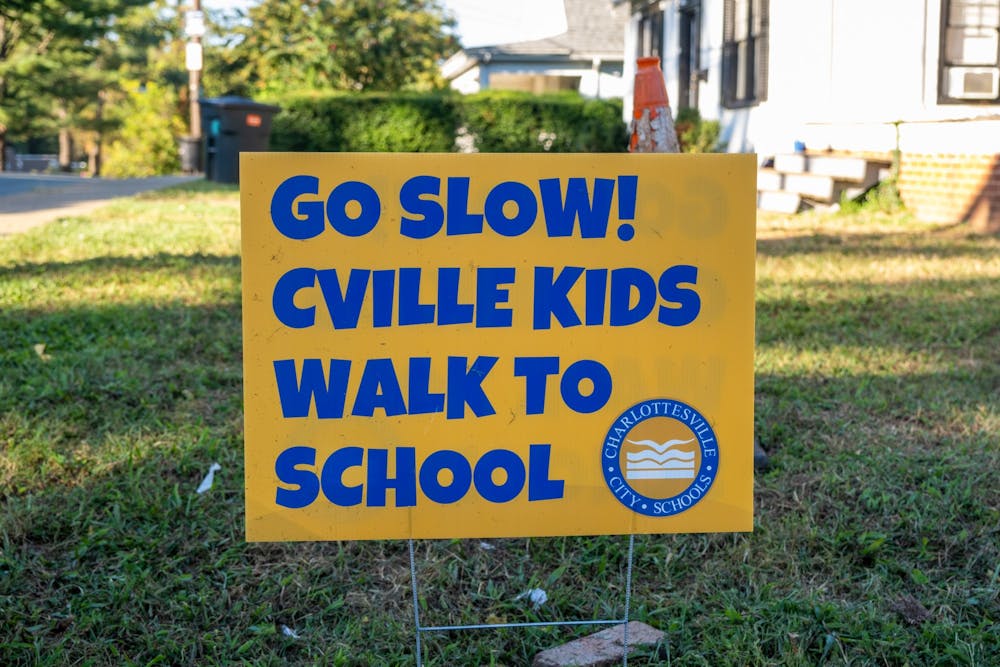A few months ago in my hometown of Oakton, a speeding car crashed into a group of high school-aged students walking home. Two girls were killed and another was critically injured. In the aftermath of this tragedy, our community came together to donate to the grieving family and plan a course of action moving forward. The sad truth, however, is that the accident could likely have been foreseen — we shouldn’t have to limit ourselves to reactionary measures. The road where the crash took place was in the top five percent for pedestrian safety risk in the state, and since 2017, it has been the site of 114 crashes. Charlottesville has similar scary figures — as of 2018, the City had the highest rate of pedestrian injuries in all of Virginia. With the current shortage of school bus drivers and thousands of Charlottesville children walking to school each day, I worry Charlottesville will only become more dangerous for pedestrians. While the City should be implementing infrastructural solutions, Charlottesville drivers should also step up and do everything they can to ensure pedestrian safety.
Charlottesville needs 40 school bus drivers — it has six. This means that nearly 80 percent of school aged children are arriving to school by car, foot, bicycle or other non-bus transportation. While Charlottesville was aware of the driver shortage early in the summer and had the option to prioritize hiring more bus drivers, their solution instead was to increase the ranges — called “family responsibility zones” — in which they expected children to be “responsible for their own safety” and walk, bike or “be escorted” to school themselves. This leaves an obvious gap — students without family members available to walk or drive them safely to school are left without adequate safety protections. Already, parents have expressed safety concerns about their children’s safety while walking to school. There are families who live two to five miles away from the school, are unsure if they can leave their jobs to pick up their children from school and to whom there are no school buses provided.
Charlottesville does have a Bicycle and Pedestrian Advisory Committee, which seems to be the group that would take measures to increase bike and pedestrian safety. This group describes itself as a voluntary advisory group that is “dedicated to improving bicycle and pedestrian facility design and safety for all road users.” While important, I worry that time constraints and the reality that members may not always be able to prioritize an unpaid position means we cannot rely solely on this volunteer organization. The chair of the Committee has already addressed concern about the recent school bus shortage, stating that with the expansion of the walking distance to schools, there are “a lot more problems than we can even catalog.”
It is worth noting that Charlottesville is not alone as it faces this problem. The U.S. as a whole failed to increase its pedestrian safety relative to rates accomplished by several European countries, and the cyclist fatality rate is up in recent years compared to European countries. Moreover there was a spike in vehicle crashes after the onset of the COVID-19 pandemic that continues to disproportionately harm lower income families and Black Americans — likely due to already existing inequities.
The reality that Charlottesville’s pedestrian safety problem expands nationwide gives an important push to rethink the way we imagine our society. It is not only Charlottesville, but the U.S. as a whole that needs reform. Japan, for instance, has a network of community support that ensures high rates of safe public transportation and walking — even for children. One Charlottesville resident has already questioned why we are not modeling our system after a Dutch town that builds pedestrian safety into its physical environment, and Livable Cville called for more immediate safety measures as well.
In the near future, Charlottesville and the U.S. should heed these complaints and start making infrastructural changes. Still, all of us who drive in Charlottesville can start making immediate changes too. Jogging around Charlottesville, I am greeted by a plethora of signs that announce “Drive Slowly, Charlottesville Kids Walk to School.” I would like to reiterate this here. Particularly toward my fellow University students, respect your environment and respect Charlottesville residents. Don’t speed, use your indicators, don’t drink and drive — let’s keep Charlottesville as safe as we can.
Jessica Moore is the Executive Editor for The Cavalier Daily. She can be reached at opinion@cavalierdaily.com.
The opinions expressed in this column are not necessarily those of The Cavalier Daily. Columns represent the views of the authors alone.







